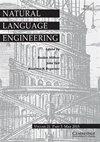The problem of varying annotations to identify abusive language in social media content
IF 1.9
3区 计算机科学
Q3 COMPUTER SCIENCE, ARTIFICIAL INTELLIGENCE
引用次数: 0
Abstract
With the increase of user-generated content on social media, the detection of abusive language has become crucial and is therefore reflected in several shared tasks that have been performed in recent years. The development of automatic detection systems is desirable, and the classification of abusive social media content can be solved with the help of machine learning. The basis for successful development of machine learning models is the availability of consistently labeled training data. But a diversity of terms and definitions of abusive language is a crucial barrier. In this work, we analyze a total of nine datasets—five English and four German datasets—designed for detecting abusive online content. We provide a detailed description of the datasets, that is, for which tasks the dataset was created, how the data were collected, and its annotation guidelines. Our analysis shows that there is no standard definition of abusive language, which often leads to inconsistent annotations. As a consequence, it is difficult to draw cross-domain conclusions, share datasets, or use models for other abusive social media language tasks. Furthermore, our manual inspection of a random sample of each dataset revealed controversial examples. We highlight challenges in data annotation by discussing those examples, and present common problems in the annotation process, such as contradictory annotations and missing context information. Finally, to complement our theoretical work, we conduct generalization experiments on three German datasets.在社交媒体内容中使用不同的注释来识别辱骂性语言的问题
随着社交媒体上用户生成内容的增加,检测辱骂性语言变得至关重要,因此反映在近年来执行的几项共享任务中。自动检测系统的开发是可取的,滥用社交媒体内容的分类可以在机器学习的帮助下解决。成功开发机器学习模型的基础是一致标记的训练数据的可用性。但滥用语言的术语和定义的多样性是一个关键障碍。在这项工作中,我们总共分析了九个数据集——五个英语数据集和四个德语数据集——旨在检测滥用在线内容。我们提供了数据集的详细描述,即数据集是为哪些任务创建的,数据是如何收集的,以及其注释指南。我们的分析表明,滥用语言没有标准的定义,这往往导致注释不一致。因此,很难得出跨领域的结论、共享数据集或将模型用于其他滥用社交媒体语言的任务。此外,我们对每个数据集的随机样本进行的手动检查揭示了有争议的例子。我们通过讨论这些例子强调了数据注释中的挑战,并提出了注释过程中的常见问题,如相互矛盾的注释和上下文信息缺失。最后,为了补充我们的理论工作,我们在三个德国数据集上进行了泛化实验。
本文章由计算机程序翻译,如有差异,请以英文原文为准。
求助全文
约1分钟内获得全文
求助全文
来源期刊

Natural Language Engineering
COMPUTER SCIENCE, ARTIFICIAL INTELLIGENCE-
CiteScore
5.90
自引率
12.00%
发文量
60
审稿时长
>12 weeks
期刊介绍:
Natural Language Engineering meets the needs of professionals and researchers working in all areas of computerised language processing, whether from the perspective of theoretical or descriptive linguistics, lexicology, computer science or engineering. Its aim is to bridge the gap between traditional computational linguistics research and the implementation of practical applications with potential real-world use. As well as publishing research articles on a broad range of topics - from text analysis, machine translation, information retrieval and speech analysis and generation to integrated systems and multi modal interfaces - it also publishes special issues on specific areas and technologies within these topics, an industry watch column and book reviews.
 求助内容:
求助内容: 应助结果提醒方式:
应助结果提醒方式:


